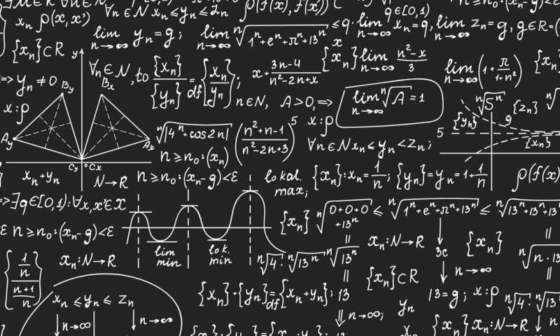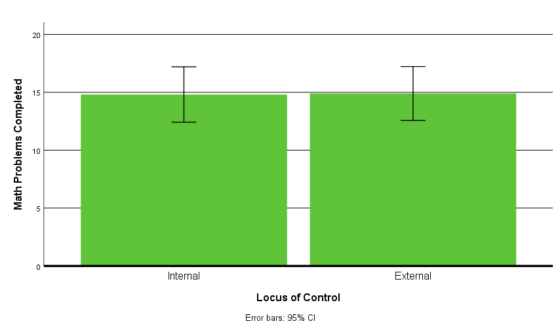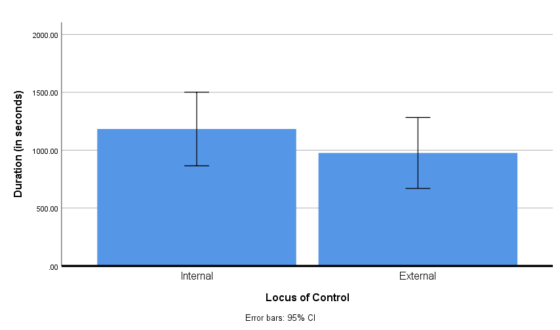Athey Crump, Emily Giovanini, Elizabeth Helminski, Mariyana McAgy & Kojiro Leonard (Advisor: Chris Buchholz)

Background Information
What causes individuals to complete difficult tasks? Locus of control is categorized into two levels: internal and external. Individuals with internal LOC believe they have control over their environment, whilst individuals with external LOC believe their environment controls them (Killpack, 2005). After examining current literature on LOC, we discovered a gap in past research, which had looked at the relationships between LOC and motivation, competence, and self-efficacy, but not perseverance (Rotter, 1996). Our research is designed to focus on the relationship between LOC and persistence. We hypothesized that those scoring a high internal LOC would have a longer duration while those scoring a high external LOC would have a shorter duration.
Methods
In this study participants (77) were asked to solve a series of math problems. Half of the participants were led to believe they had some control over the difficulty of the math problems, while the other half were led to believe that the difficulty of the questions was random. However, the manipulation did not work due to an unforeseen error in setting up the study. As a part of this study, participants were also asked to complete a scale that measured whether they possessed more internal or external locus of control using Rotter’s scale of Locus of Control.
Results & Discussion
Data collected from the survey was run with the results from the LOC questionnaire. While there was no difference in the total number of math problems completed for external vs. internal locus of control, those who have an internal locus of control did spend more time answering questions but these results were not statistically significant, as seen in Figure 1. So, while these two groups (internal/external) completed the same number of problems, it is possible that those with an internal locus of control spent more time thinking and working on them, as can be seen in Figure 2. This makes some sense in that those with internal locus of control feel they have more control, and thus they spend more time working (i.e. persisting).

Figure 1: Internal and external locus of control on number of math problems completed.

Figure 2: Internal and external locus of control on duration of survey.
Reflection
The process of conducting an experiment from start to finish provided the opportunity to put knowledge we’ve gained over the past four years into a single project. When creating an online study, we gained experience using programs like SPSS, SONA and Qualtrics. Though there were several changes that needed to be made to the study, this only allowed us the opportunity to showcase our knowledge of research skills. Though there were several challenges to overcome, this study allowed us, as students to think and act as researchers and provided the opportunity to have these skills as undergrads.